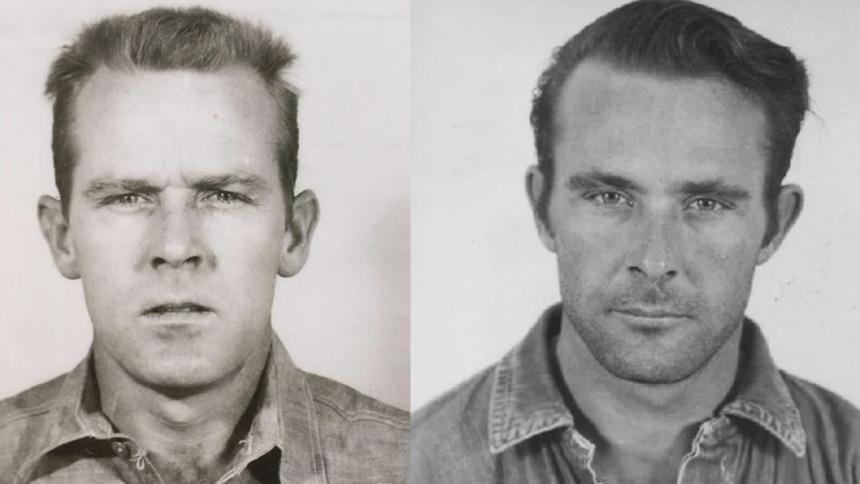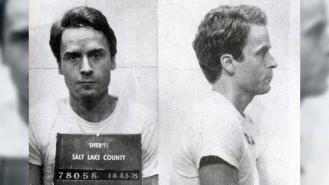
Alcatraz: The most famous prison break in history
There are very few prisons as notorious as Alcatraz, located on Alcatraz Island in San Francisco Bay, California. It was a maximum-security prison that housed inmates who repeatedly caused trouble at other prisons or inmates that had a history of attempting to escape. Some of its most notable inmates include: Al Capone, George ‘Machine Gun’ Kelly and Robert Franklin Stroud, aka the ‘Birdman of Alcatraz.’
Due to the strong wave currents and the icy cold temperature of the waters surrounding the prison, Alcatraz was said to be inescapable and over the course of 29 years, 36 men attempted to gain their freedom in 14 separate escape attempts. Most of those who attempted to escape were either shot and killed, caught by authorities or drowned. However, in 1962, three inmates escaped from their cells and may have escaped from Alcatraz Island. The story of the 1962 Alcatraz escape still manages to captivate the world over half a century later and still remains an enduring mystery.
In December of 1961, three inmates began formulating a plan to escape from Alcatraz. Brothers Clarence and John Anglin were serving 35-year sentences for robbing the Columbia Savings Bank in Columbia, Alabama. After multiple escapes from various prisons, the brothers were transferred to Alcatraz. ‘The reason they sent them to Alcatraz was because they couldn’t keep them anywhere else they put them,’ recollected their sister, Marie (Associated Press, 19 June, 2013 – ‘Alcatraz Escapee’s Sister Returns to Robbery Scene’). Frank Morris was serving a 14-year sentence at Alcatraz for burglary. Before being sent to Alcatraz, he had been serving a 10-year sentence in Louisiana State Penitentiary for robbery and possession of narcotics. However, he had managed to escape but was arrested again in 1960 (The Riverbank News, 9 January, 2018 – ‘Most Famous Alcatraz Escape Try’). The Anglin brothers and Morris had struck up a friendship while they were all serving time in Florida State Prison in Raiford.
To prepare for their escape, they had created a homemade drill with the motor of a broken vacuum cleaner. They used the homemade drill as well as spoons to widen the air vents underneath the sinks in their respective prison cells. Most of their covert work took place in the evening time when the sounds could be cancelled out by other inmates’ chatter and music. They then used the widened vents to climb into an unguarded utility corridor which was located above their cell block. Here, they set up a secret workshop to create handcrafted items to assist in their escape including life vests and a rubber raft made from raincoats and wooden paddles (Escape from Alcatraz by Stephanie Watson).
On the night of the 11th of June, 1962, the three inmates put their daring plan into action. They used air shafts as well as a ventilator to get to the roof of the prison. From here, they slid down a pipe to the grounds and then scaled the fence while in the range of the north gun tower (Escape from Alcatraz: The True Crime Classic by J. Campbell Bruce). The three men then launched their homemade raft into the icy waters on the northeast shore of the island, never to be seen again.
They were discovered missing the following morning when the guard conducting the routine bed checks found decoy heads in the inmates’ beds. The three inmates had fashioned dummy heads out of plaster, flesh-coloured paint and human hair which they had accumulated from the prison barber shop. They had concealed the chipped away air vent with a fake grill cover. A fourth inmate, Allen West, had also assisted in the planning of the intricate escape but had to back out last minute due to technical problems. He was able to provide authorities with details of their elaborate plan.
The U.S. coast guard immediately dispatched a helicopter as well as four patrol boats to search the waters surrounding Alcatraz Island while an all-points bulletin was implemented which covered the entire city of San Francisco (FBI Records: The Vault
The main theory is that all three men didn’t survive the choppy waters and in 1979, the FBI officially concluded that the three men had drowned in the waters of San Francisco Bay and their bodies were swept into the Pacific Ocean. However, no bodies were ever discovered, which keeps the mystery alive. Many people still speculate that the Anglin brothers and Morris successfully escaped from Alcatraz, and more importantly, survived.
In 2012, members of the Anglin family shared their belief with the San Francisco Chronicle that they were still alive and well. ‘I’ve always believed they made it, and I haven’t changed my mind about that,’ said their sister (The Associated Press News Service, 12 June, 2012 – ‘Alcatraz Marks 50th Anniversary of Fabled Escape’). Dave Widner, one of their nephews, said the family were convinced that Clarence and John had made their way to South America. According to the family, the first clue they had that they had survived came shortly after escape when they received a phone call from a man who stated: ‘This is John Anglin.’ Then at Christmas of 1962, they received a Christmas card which read: ‘To Mother, from John. Merry Christmas’ (San Francisco Chronicle, 12 June, 2012 – ‘Alcatraz’ Escapees’ Relatives Convicted Brothers Survived’).
Then just the following year, police received a letter from somebody claiming that they were John. It read in part: ‘My name is John Anglin. I escape (sic) from Alcatraz in June 1962 with my brother Clarence and Frank Morris. I’m 83 years old and in bad shape. I have cancer. Yes we all made it that night but barely!’ The letter writer said that he had lived in Seattle for several years as well as North Dakota and southern California. He also claimed that he was the only one of the three inmates to still be living; he said that Frank had died in 2008 and his brother, Clarence, had died in 2011. He also agreed to turn himself in on the condition that he go to jail for ‘no more than one year and get medical attention.’ The man never made contact again and an examination of the letter and envelope for fingerprints or DNA came back as inconclusive (The Atlanta Journal-Constitution, 24 January, 2018 – ‘Alcatraz Escapee Alive?’). The FBI were never able to determine whether the letter was legitimate or just a hoax.
A couple of years later, the Sky HISTORY aired a special titled Alcatraz: Search for Truth which included a photograph which allegedly showed the Anglin brothers together in Brazil 13 years after the escape. During the program, the Anglin brothers’ nephews also revealed that the family didn’t only receive one Christmas card allegedly from the brothers, but received them for three years after the 1962 escape. The handwriting on the Christmas cards matched the handwriting of the Anglin brothers but the investigators were unable to pinpoint an exact date of the cards.
The circumstantial evidence that the trio survived continues to pump life into the cold case and almost every single year, the Alcatraz escape will be featured in at least one media outlet, whether it be rumours of their fate or contentions that they did not survive. While so many years have elapsed, authorities still investigate any and all credible leads that come in. After all, the Anglin brothers and Morris still have active arrest warrants which remain on the U.S. marshal’s government website. Don O’Keefe, U.S. marshal for the Northern District of California stated: ‘Some may believe that we’re chasing shadows, but our efforts are not just to perform due diligence, but to be a warning to other fugitives, that U.S. Marshals don’t give up because of the passing of time.’ (Associated Press, 16 November, 2018 – ‘FBI Re-Creates Decoy Heads Alcatraz Inmates Used in Escape’).
Alcatraz Prison closed for good in 1963, just one year after the Anglin brothers and Morris launched themselves into the choppy waters. It now serves as a tourist destination, boasting of more than one million visitors each year, many of whom are drawn to the island by the infamous escape.








